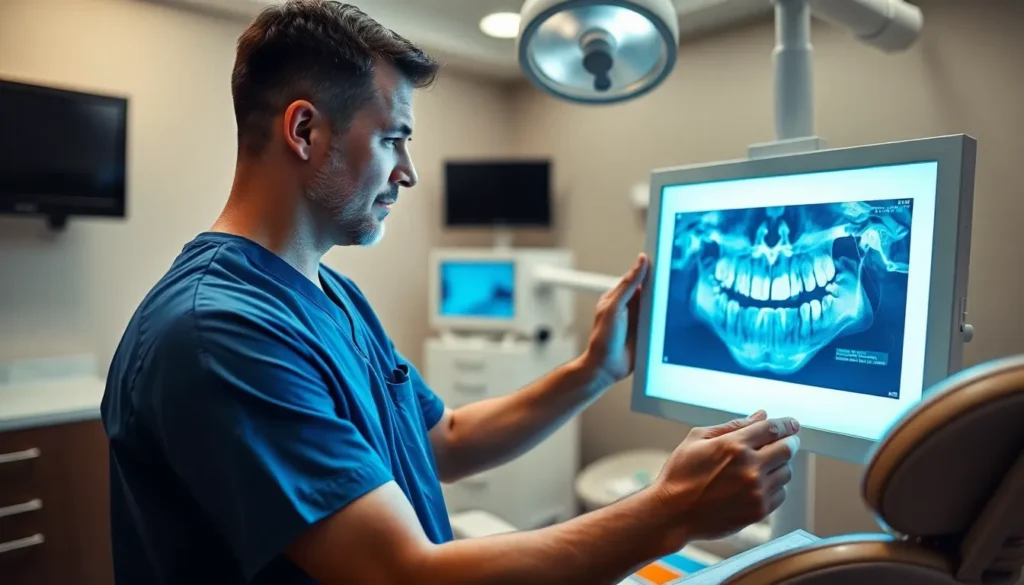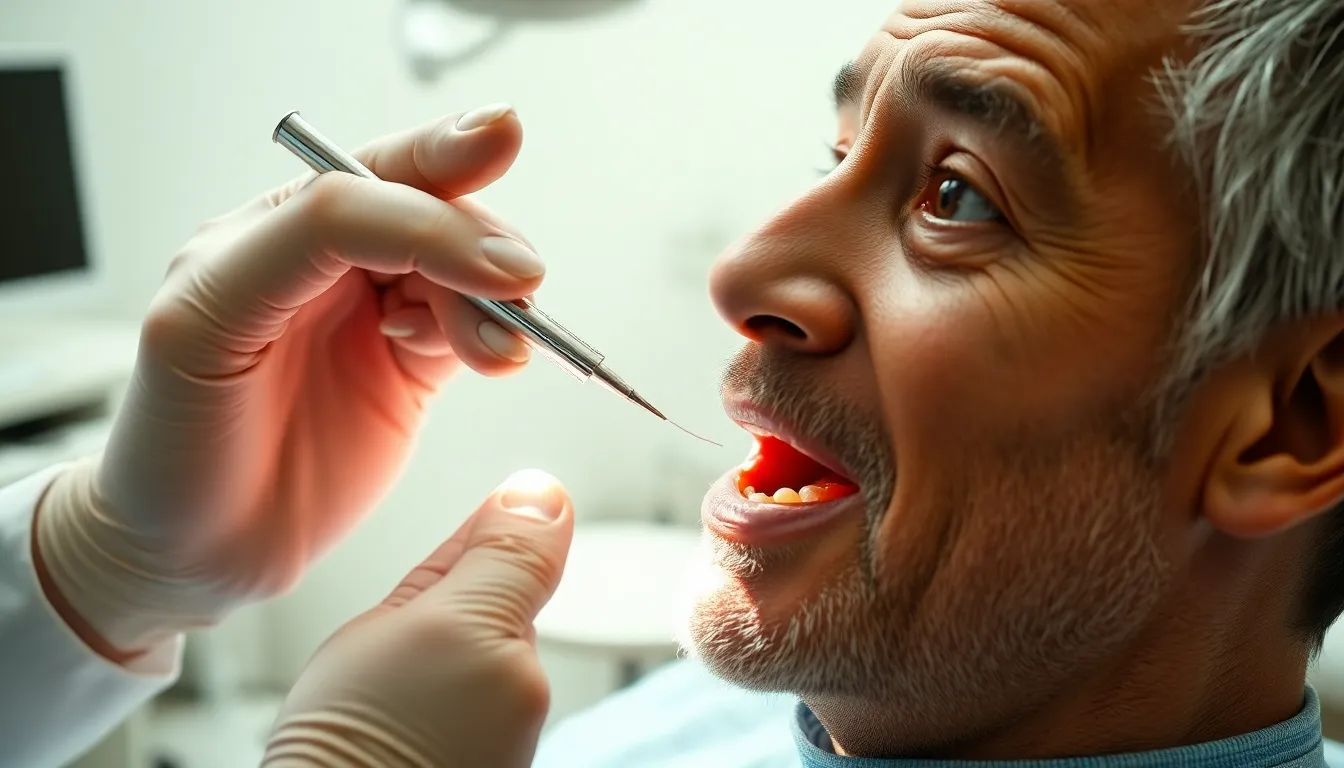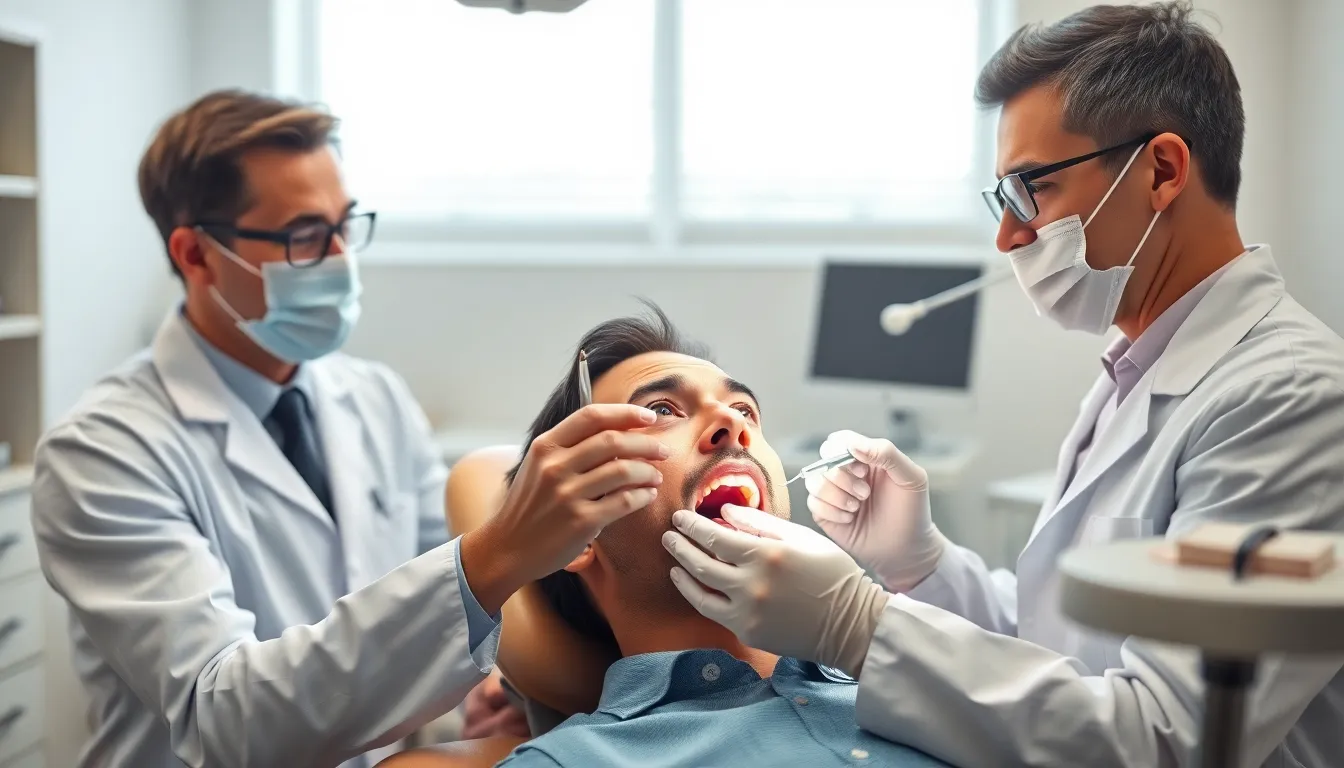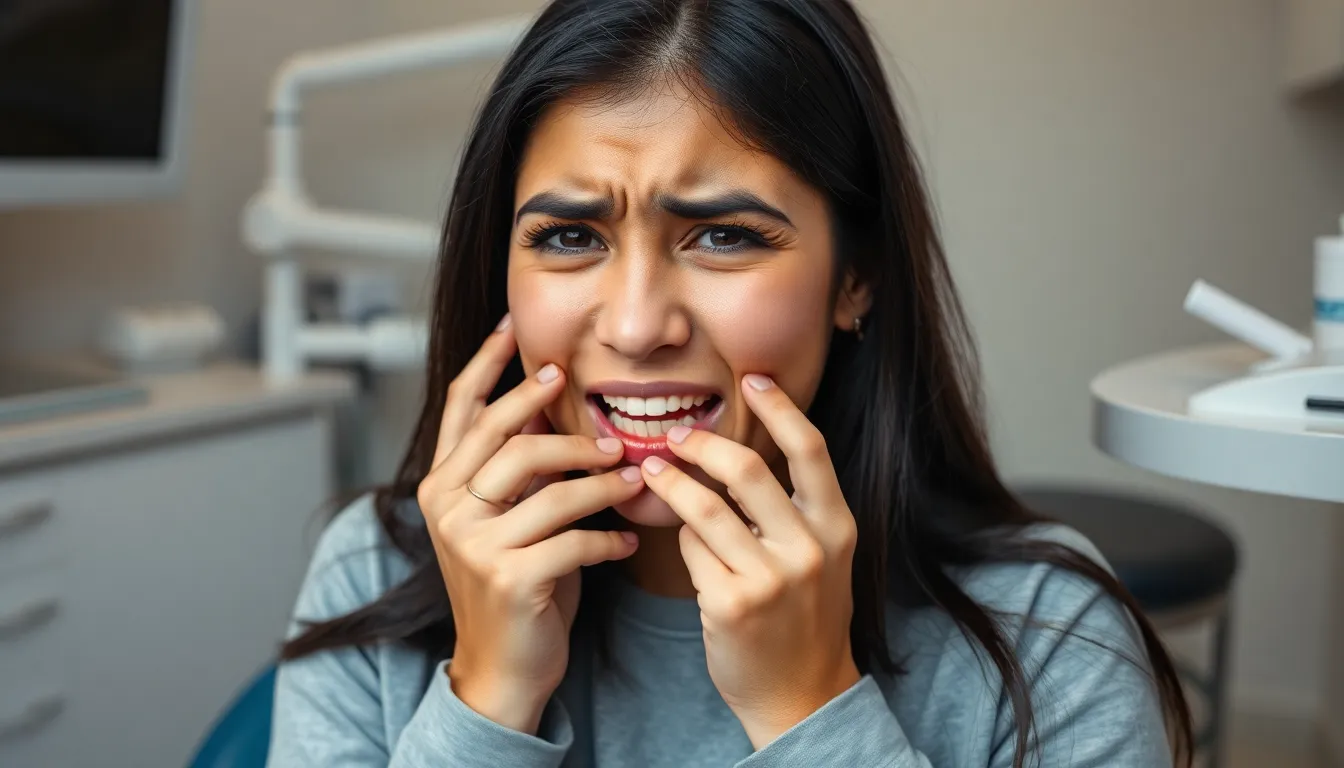Are you dealing with an impacted canine tooth that’s causing pain or affecting your smile? This common dental condition occurs when a canine tooth doesn’t erupt properly into the dental arch, remaining partially or completely trapped beneath the gum or bone.
Whether you’re experiencing discomfort or your dentist discovered this issue during a routine X-ray, effective treatment options exist. From surgical exposure and orthodontic treatment to extraction in severe cases, modern dentistry offers several approaches to address impacted canines. Understanding your options is the first step toward resolving this dental concern and restoring your oral health.
Understanding Impacted Canine Teeth
Impacted canine teeth occur when these essential teeth fail to emerge properly through the gums into their normal position in the dental arch. Canine teeth play a crucial role in your bite alignment and facial structure, making proper treatment essential for both functional and aesthetic reasons.
Why Canines Become Impacted
Canine teeth become impacted due to several underlying factors that prevent their normal eruption. Overcrowding in the dental arch leaves insufficient space for canines to emerge properly, forcing them to remain trapped beneath the gum line. Genetic factors often contribute to impaction, with certain inherited traits increasing your risk of developing this condition. Abnormal growth patterns during dental development can cause canines to develop in incorrect positions or directions within the jawbone. Early loss of baby teeth sometimes disrupts the eruption pathway, while delayed shedding of primary canines blocks the permanent canines from emerging naturally.
Dr. Todd B. Harris notes, “I’ve treated many patients with impacted canines who were completely unaware of their condition until we discovered it during routine imaging. Early intervention dramatically improves treatment outcomes and preserves dental function.”
Signs and Symptoms of Impacted Canines
Recognizing the signs of impacted canines helps identify this condition before complications develop. Persistent baby canines beyond the typical age of shedding (around 12-13 years) often indicate impaction of permanent canines. Gaps where adult canines should have emerged by ages 13-14 suggest potential impaction beneath the gums. Swelling or tenderness in the gum area above the impaction site commonly occurs as the tooth attempts to erupt. Misalignment of neighboring teeth happens as they shift to fill the space where the canine should be. Pain while chewing or biting affects many patients with impacted canines, especially when the impaction creates pressure on nerve endings.
Diagnosis Methods for Impacted Canine Teeth

Proper diagnosis of impacted canine teeth involves a combination of clinical examination and advanced imaging techniques. These diagnostic approaches help determine the exact position of the impacted tooth and inform the most appropriate treatment plan.
Clinical Examination
Your dentist or orthodontist begins the diagnostic process with a thorough clinical examination. During this examination, they evaluate eruption patterns and assess spacing in your dental arch to identify potential canine impaction. Physical palpation of the canine area reveals the absence or abnormal positioning of canine teeth that should have erupted by a certain age. Dr. Todd B. Harris often mentions that “many of my patients are surprised when we discover impacted canines during routine examinations, having no idea that these important teeth aren’t in their proper position.”
Advanced Imaging Techniques
Radiographic imaging provides crucial detailed information about impacted canines that can’t be obtained through clinical examination alone. Panoramic X-rays offer an overview of all teeth and surrounding structures, helping identify the general location of impacted canines. Cone-beam computed tomography (CBCT) delivers 3D images that precisely show the orientation and severity of the impaction in relation to neighboring teeth and anatomical structures. Periapical radiographs focus on exact areas and can reveal root development and potential complications such as root resorption of adjacent teeth.
Surgical Treatment Options
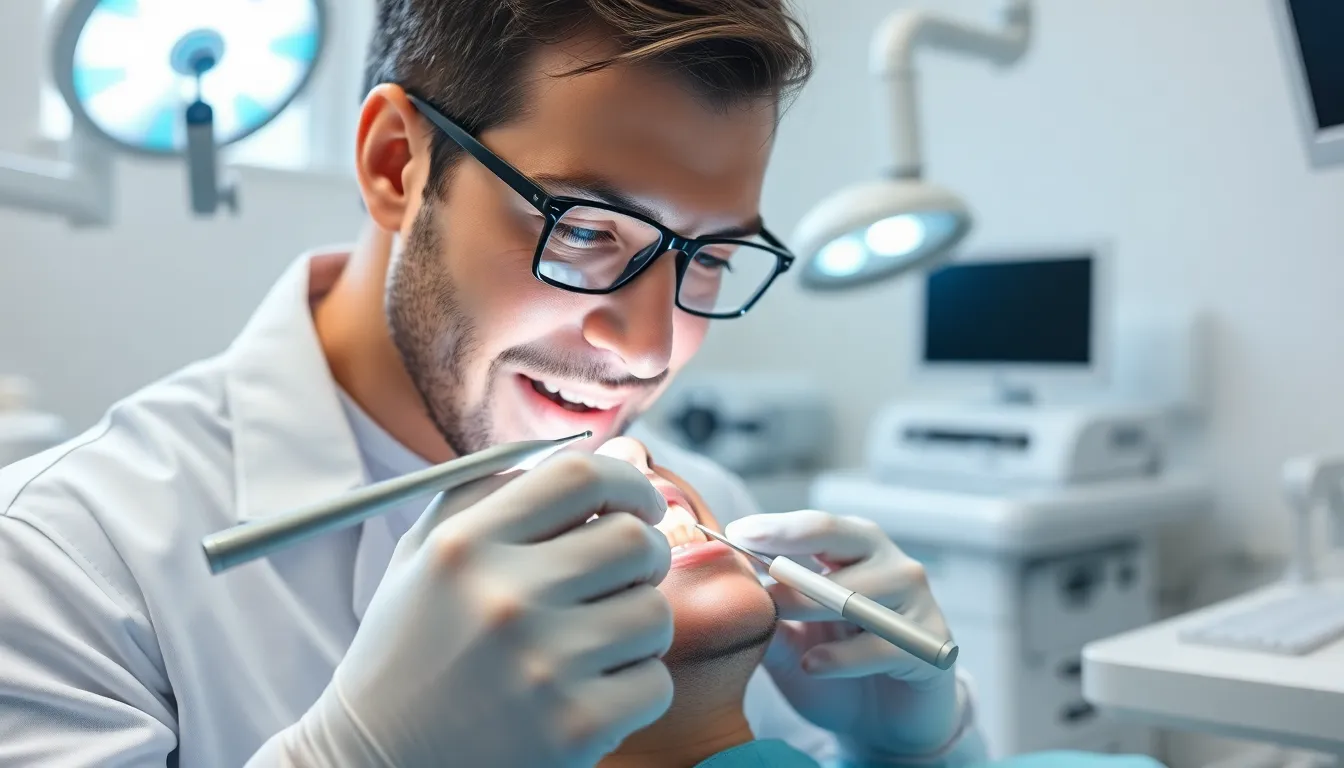
Surgical interventions provide effective answers for impacted canine teeth when they fail to erupt naturally. These procedures aim to either guide the tooth into its proper position or remove it entirely, depending on several clinical factors.
Surgical Exposure and Orthodontic Alignment
Surgical exposure combined with orthodontic traction represents the most common and preferred treatment for impacted canines. During this procedure, your oral surgeon lifts the gum tissue to expose the impacted tooth, which typically remains hidden palatally (toward the roof of your mouth) or embedded within the jawbone in an abnormal position. After exposure, orthodontic brackets and wires apply gentle, consistent forces to gradually guide the tooth into its correct alignment in the dental arch. This approach preserves the natural canine tooth, maintaining both functional bite integrity and aesthetic appearance.
“Many patients are surprised by how well their impacted canines respond to surgical exposure and orthodontic treatment,” notes Dr. Todd B. Harris. “I recently treated a 16-year-old patient whose maxillary canine was deeply impacted. After surgical exposure and 14 months of orthodontic traction, her canine moved perfectly into position, restoring her smile and proper bite function.”
Creating adequate space in the dental arch before attempting alignment significantly enhances treatment success. Orthodontists achieve this through arch expansion or distalization techniques, ensuring the impacted tooth has room to move into proper position. Clinical studies demonstrate excellent outcomes with this approach, particularly for maxillary canines, which play a crucial role in bite function due to their long roots and guidance of proper occlusion.
Extraction of Impacted Canines
Extraction becomes necessary in exact situations where alignment isn’t feasible or complications exist. Your dentist may recommend removing an impacted canine if it has developed cysts, shows severe malposition, or demonstrates ankylosis (fusion to the bone). Unlike wisdom teeth, which are routinely extracted without functional consequences, canine teeth serve important roles in dental arch stability and bite function.
Dr. Harris explains, “I approach canine extraction as a last resort. In one memorable case, a 43-year-old patient had a horizontally impacted canine pressing against adjacent tooth roots. After considering all options, we determined extraction was the only viable solution to prevent damage to neighboring teeth. We then restored his smile with a dental implant, achieving both functional and aesthetic goals.”
Additional treatment techniques include autotransplantation, where surgeons carefully reposition the impacted tooth into a prepared site in the jaw. Modern clear aligner systems also serve as adjunctive tools in managing impacted canine cases, working along with surgical exposure to guide teeth into alignment. These innovative approaches expand treatment possibilities, particularly for patients with complex impactions or those seeking more aesthetic orthodontic options during the alignment phase.
Non-Surgical Approaches to Impacted Canines
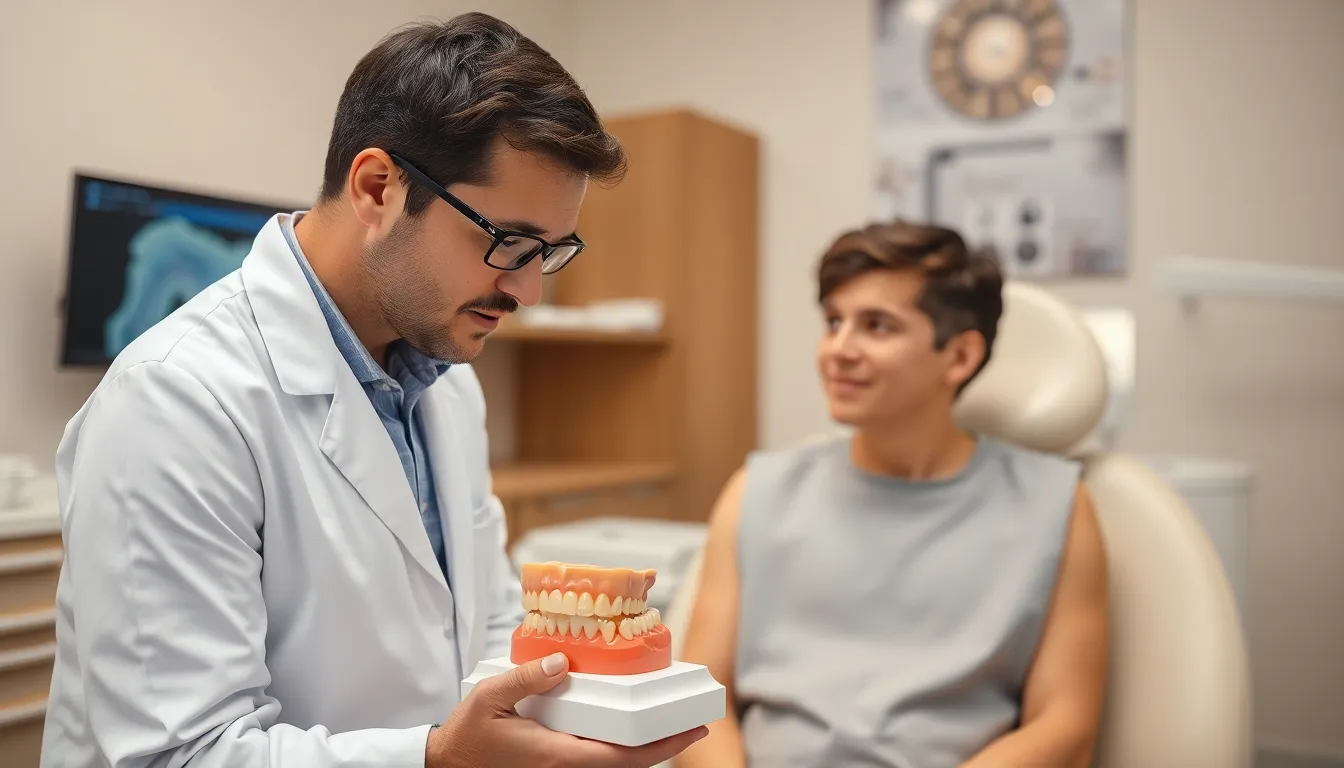
Non-surgical treatments for impacted canines focus on creating favorable conditions that allow the tooth to erupt naturally without extensive intervention. These conservative approaches aim to maintain periodontal health while achieving proper tooth alignment through less invasive techniques.
Early Interceptive Treatment
Early identification of potential canine impaction is crucial for successful non-surgical management. Your dentist or hygienist plays a vital role in detecting developing eruption problems during routine examinations. When signs of impaction appear, referral to an orthodontist before starting comprehensive braces treatment can significantly improve outcomes. Removing obstacles like over-retained baby teeth, extra teeth, or tissue growths that block eruption paths often facilitates natural tooth emergence. Dr. Harris notes, “I’ve seen many cases where simply extracting a persistent baby canine created enough space for the permanent tooth to find its way into the arch without further intervention.”
Early surgical exposure without immediate orthodontic attachment represents another interceptive approach. This technique involves carefully lifting the gum to expose the impacted tooth, encouraging it to partially erupt on its own. The procedure can simplify later orthodontic treatment by reducing the need for forceful traction once braces are applied. Patients typically experience shorter overall treatment times when impaction issues are addressed early rather than waiting until the canine becomes fully impacted.
Orthodontic Answers
Dental arch expansion offers an effective non-surgical option for managing impacted canines in many cases. This approach focuses on slowly and carefully widening the dental arch to create adequate space for the canine to erupt naturally without extracting other teeth. Your orthodontist may use specialized appliances to gradually expand the arch while monitoring the impacted tooth’s progress. Though this method takes longer than surgical approaches, it maintains all teeth and supports optimal periodontal health.
Modern aligner therapy has expanded treatment possibilities for selected impacted canine cases. These clear aligners can work along with minimally invasive exposure techniques to guide partially erupted canines into proper position. “One of my patients was initially hesitant about traditional braces,” shares Dr. Harris. “We were able to use a combination of minor surgical exposure and clear aligners to successfully bring her impacted canine into alignment. She appreciated the aesthetic advantage of this approach during her professional meetings.”
Non-surgical orthodontic management also emphasizes close monitoring through regular follow-up appointments. Your treatment progress will be tracked with periodic imaging to ensure the impacted canine is moving in the desired direction. This comprehensive approach helps prevent potential complications while achieving optimal functional and aesthetic results with minimal intervention.
Recovery and Aftercare

After your impacted canine tooth treatment, you’ll enter a recovery phase that typically involves managing post-surgical symptoms and maintaining proper oral care. Most patients experience swelling and minor pain around the surgery site that subsides within a few days, along with some initial discomfort from orthodontic adjustments.
Pain Management
Local anesthesia and nitrous oxide effectively control pain during the surgical exposure procedure. For complex cases, your oral surgeon might recommend IV sedation to ensure your comfort throughout the treatment. Over-the-counter pain relievers such as ibuprofen or acetaminophen generally provide sufficient relief for postoperative discomfort unless your surgeon prescribes alternative medication. Applying ice packs to your cheek helps reduce both swelling and pain in the days following surgery.
Dr. Harris notes, “Many of my patients are surprised by how manageable their pain is after canine exposure surgery. One patient, a college student named Emma, was particularly anxious about post-surgical pain but found that following our recommended pain management protocol allowed her to return to classes just two days after her procedure.”
Oral Hygiene During Healing
Excellent oral hygiene plays a critical role in preventing infection and promoting proper healing after your impacted canine treatment. Gentle brushing around the surgical site removes bacteria without disrupting the healing tissue. Antimicrobial mouth rinses containing chlorhexidine offer additional protection against potential infections during the recovery period. Your diet significantly impacts healing—soft foods are recommended initially while avoiding hard, crunchy, or sticky items that could disrupt the surgical site or damage orthodontic attachments.
Potential Complications of Impacted Canine Treatment
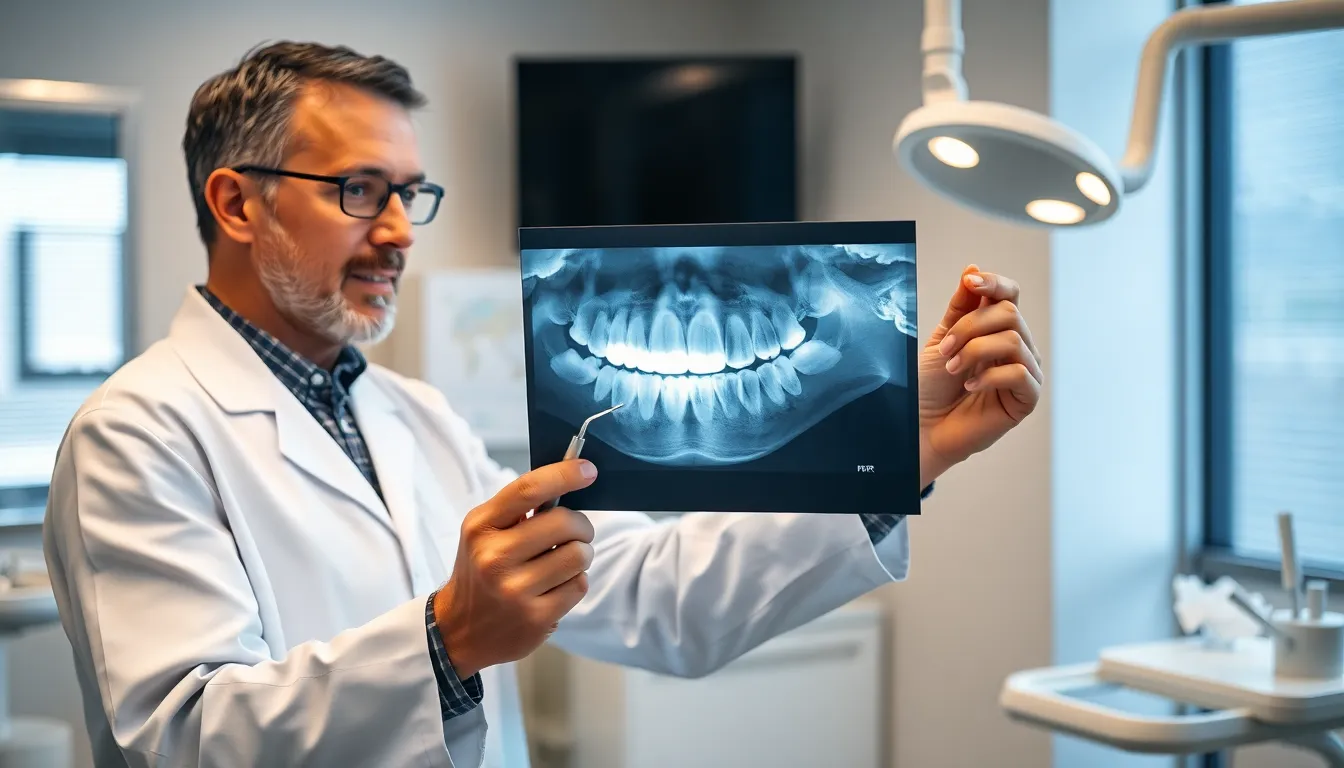
While impacted canine treatment is generally successful, several potential complications can arise during or after the procedure. Understanding these possible issues helps patients prepare for treatment and recognize when to seek additional care.
Infection and Nerve Damage
Infections following impacted canine treatment occur in approximately 5-10% of cases when proper post-operative care isn’t followed. Signs of infection include persistent pain, increased swelling after 48 hours, unusual discharge, and fever. Antibiotics typically resolve most infections when caught early. Dr. Todd B. Harris notes, “I’ve seen patients recover quickly from minor infections when they contact our office at the first sign of trouble rather than waiting to see if it improves on its own.”
Nerve damage represents a rare but serious complication that can result in numbness or altered sensation in the lips, gums, or face. This complication happens because canine teeth lie close to important facial nerves, particularly the infraorbital nerve. Most cases of nerve damage are temporary, resolving within a few weeks to months as the nerve heals. In rare instances, sensation changes may become permanent if the nerve experiences important trauma during surgery.
Orthodontic Failure
Orthodontic failure happens when the exposed canine doesn’t move into its proper position even though treatment efforts. Common causes include bracket breakage, de-bonding of orthodontic attachments, or ankylosis (fusion of the tooth to the bone). Studies show that orthodontic failure occurs in approximately 10-15% of impacted canine cases, often requiring additional procedures or alternative treatment plans.
One patient, Sarah, experienced a setback when her orthodontic bracket detached two weeks after her impacted canine exposure surgery. “We quickly reattached the bracket during an emergency appointment,” Dr. Harris explains. “This prompt intervention prevented important treatment delays and eventually resulted in successful positioning of her canine.”
Other potential complications include gum recession around the treated tooth, root resorption of adjacent teeth, and development of periodontal problems if proper hygiene isn’t maintained throughout treatment. Post-treatment monitoring through regular check-ups helps identify and address these issues before they become important problems.
Cost Considerations for Impacted Canine Tooth Treatment
The financial aspects of impacted canine tooth treatment vary significantly based on several factors including procedure complexity, your geographic location, and your chosen healthcare provider. Surgical exposure, which is one of the most common treatments, typically costs between $379 and $1500 per tooth. Many dental practices charge approximately $500 to $900 for the surgical uncovering of an impacted canine.
For patients requiring extraction rather than alignment, costs can reach up to $650 per tooth without insurance coverage. Additional expenses emerge when sedation is necessary for your comfort during the procedure. IV sedation can increase the total cost to around $1450 for a single impacted tooth or approximately $1900 when treating two impacted teeth simultaneously.
Insurance coverage plays a crucial role in managing these expenses. Most dental insurance plans cover a portion of impacted canine treatments, though the percentage varies widely between providers and exact policies. Dr. Todd B. Harris advises, “I always recommend patients consult with our financial coordinator before treatment begins. Understanding your insurance benefits can significantly reduce unexpected out-of-pocket expenses and help you plan accordingly.”
One patient, Sarah, shared her experience: “I was initially worried about the cost of treating my daughter’s two impacted canines. After consulting with our insurance provider and the dental office’s financial team, we discovered our plan covered 70% of the surgical exposure. This made the treatment much more affordable than we’d anticipated.”
Factors that influence your total treatment cost include:
- Severity of the impaction (deeper impactions require more complex procedures)
- Number of impacted teeth requiring treatment
- Type of anesthesia or sedation used
- Need for additional orthodontic work
- Geographic location of your dental provider
- Experience level of your oral surgeon or dentist
Some dental practices offer payment plans or financing options to help distribute the financial burden over time. These arrangements often make necessary treatment more accessible for patients without comprehensive insurance coverage or those with high deductibles.
| Procedure Type | Average Cost Range | Notes |
|---|---|---|
| Surgical Exposure | $379 – $1500 per tooth | Most common procedure |
| Extraction | Up to $650 per tooth | Without insurance |
| Single Tooth Treatment with IV Sedation | ~$1450 | Includes surgical costs |
| Two Teeth Treatment with IV Sedation | ~$1900 | Includes surgical costs |
Conclusion
Taking action for your impacted canine teeth can transform both your oral health and confidence. With treatment options ranging from surgical exposure to non-surgical approaches, you have multiple paths to address this condition effectively.
Remember that early intervention typically leads to better outcomes and less invasive procedures. The recovery process is manageable for most patients with proper care and following your dentist’s aftercare instructions.
While costs vary based on your exact situation and location, many dental practices offer payment plans to make treatment accessible. Don’t hesitate to discuss financial concerns with your provider.
By addressing impacted canines proactively, you’re investing in your long-term dental health and a properly aligned smile that will serve you well for years to come.
Frequently Asked Questions
What are impacted canine teeth?
Impacted canine teeth occur when these essential teeth fail to erupt properly into their normal position in the dental arch. This condition affects both the aesthetics of your smile and your oral function. Canine teeth are crucial for proper bite alignment and facial structure, and their impaction can lead to various dental issues if left untreated.
What causes canine teeth to become impacted?
Several factors can cause canine impaction including dental overcrowding, genetic predispositions, abnormal growth patterns, and problems with the timing of baby teeth loss. When there isn’t enough space in the dental arch or if baby teeth don’t fall out on schedule, permanent canines may become trapped beneath the gum line or misaligned.
What are the signs of an impacted canine tooth?
Common signs include persistent baby canines past their expected loss, noticeable gaps where adult canines should appear, swelling or tenderness in the gums, misalignment of neighboring teeth, and pain while chewing. Many patients discover they have impacted canines during routine dental examinations, as the condition isn’t always accompanied by obvious symptoms.
How are impacted canine teeth diagnosed?
Diagnosis involves a clinical examination where dentists assess eruption patterns and dental spacing, along with physical palpation to check for abnormal positioning. Advanced imaging techniques such as panoramic X-rays and cone-beam computed tomography (CBCT) provide detailed information about the impacted teeth’s position, helping determine the most appropriate treatment approach.
What is the most common treatment for impacted canines?
Surgical exposure combined with orthodontic traction is the most common treatment. This involves lifting the gum tissue to expose the impacted tooth and attaching an orthodontic bracket to gradually guide it into proper alignment. This approach preserves the natural tooth and helps establish proper dental function and aesthetics.
When is extraction necessary for an impacted canine?
Extraction is typically considered a last resort when other treatments aren’t feasible. It may be necessary if the impacted canine has developed severe complications, is ankylosed (fused to the bone), could damage adjacent teeth, or is positioned in a way that makes orthodontic movement impossible. About 5-10% of impacted canines require extraction.
Are there non-surgical options for treating impacted canines?
Yes, in some cases. Early interceptive treatment can create favorable conditions for natural eruption. This might include removing baby teeth that are blocking eruption paths, dental arch expansion to create space, or early surgical exposure without immediate orthodontic attachment. Modern aligner therapy can also help guide partially erupted canines into proper position.
What is the recovery like after impacted canine treatment?
Most patients experience swelling and minor pain that subsides within a few days. Pain management typically includes local anesthesia, over-the-counter pain relievers, and ice packs. Excellent oral hygiene is critical during recovery, with recommendations for gentle brushing, antimicrobial mouth rinses, and a soft food diet to promote healing.
What complications can occur with impacted canine treatment?
Potential complications include infection (5-10% of cases), temporary or permanent nerve damage (rare), orthodontic failure (10-15% of cases), gum recession, root resorption of adjacent teeth, and periodontal problems. Regular post-treatment monitoring helps identify and address these issues early.
How much does impacted canine treatment cost?
Treatment costs vary based on procedure complexity, geographic location, and provider. Surgical exposure typically ranges from $379-$1500 per tooth, while extraction can cost up to $650 without insurance. IV sedation may add costs, bringing the total to around $1450 for a single impacted tooth. Many dental practices offer payment plans to make treatment more accessible.

